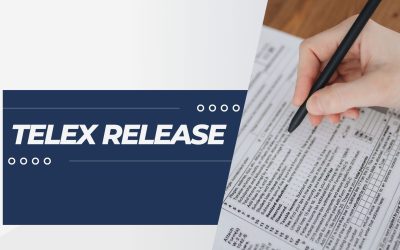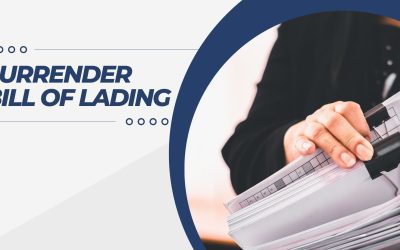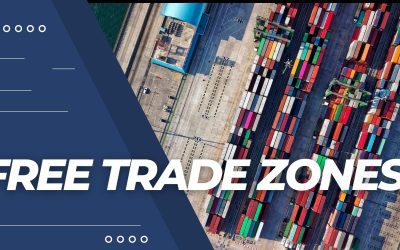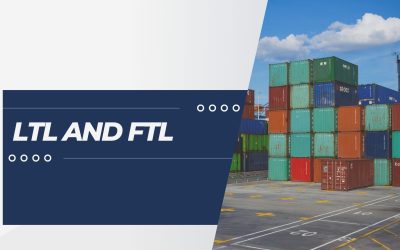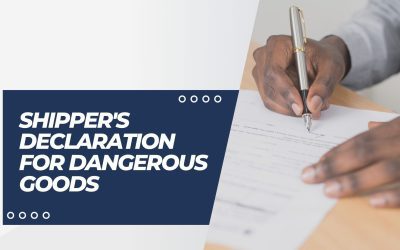Introduction to Trade 101
Commodity Trade Finance
Commodity trade finance is the process of securing funding for the purchase of commodities. This can be done through a number of different methods, including letters of credit, documentary collections, and factoring. In this blog post, we will discuss the different...
Should we export our product?
Business has gone international. New electronic and logistics technologies have narrowed distance, cutting down on time-consuming aspects of trade that used to be necessary for reaching customers across countries; while agreements open markets up even more by removing...
Automated Manifest System
The AMS was designed to not only reduce the time needed to import goods into the United States, but also to keep track of freight and ensure that imported goods are safe. If all the required documentation for the AMS is not submitted within the deadline set by...
Difference Between BAF and CAF
BAF and CAF are two charges that shipping carriers use to protect themselves against price fluctuations. These surcharges are levied on the total freight bill and play a significant role in understanding the transport’s final price. BAF vs. CAF BAF (Bunker Adjustment...
Tonnage In Shipping
Tonnage in Shipping There are two main ways to measure the tonnage of a ship: either by its internal volume or by the weight of its cargo. In the past, the former method was used, but today the latter is more common. Tonnage is thus now defined as the total number of...
Reefer Refrigerated Containers
Reefer Containers Reefer containers, also known as refrigerated containers, are specialized shipping containers designed to keep perishable goods fresh during transport. Reefers are outfitted with a refrigeration system that can be powered by an external power source...
House Bill Of Lading
House Bill of Lading The House Bill of Lading is a key document in shipping as it outlines all of the information regarding the shipment, including who is responsible for what, where the shipment is going, what is being shipped, and when it is being shipped. This...
Telex Release
Telex Release A Telex Release is an electronic shipping message sent from an agent at the port of loading (POL) to the agent at the port of discharge (POD). This message confirms that the non-negotiable Original Bill of Lading (OBL) has been surrendered to authorities...
What Is Surrender Bill of Lading
A Surrender Bill of Lading is a document that is used to officially close out the shipping process. This document is used to indicate that the goods have been received and that the quality of the goods is satisfactory. The Surrender Bill of Lading also allows the...
US Customs Clearance
As an established business, you likely have a dedicated department or professional to handle your complex customs clearance process. However, if you're a small business or startup, you may find it difficult to manage on your own. The customs clearance process is...
US CBP Form
What is CBP Form 5106? CBP Form 5106, also known as the Importer Identity form, is a document that must be submitted to the Customs and Border Protection (CBP) before importing commercial goods into the US. The CBP Form 5106 is used to create an account with the CBP...
Types Of Containers In International Shipping
If you're in the business of international shipping, it's important to know the different types of containers available to you. There are many factors to consider when choosing the right container for your cargo, including weather conditions and the type of product...
Blind Shipment
The blind shipping process is one in which the seller doesn't disclose any details about their producer or manufacturer. This allows them to transport goods directly from source-to consumer, removing third party vendor intervention and maintaining confidentiality...
CBP Form
What is CBP Form 7512 Transportation Entry and Manifest of Goods? CBP Form 7512, Transportation Entry and Manifest of Goods is a document filed by the importer or their agent with U.S. Customs and Border Protection (CBP) that provides details about the shipment of...
Anti Dumping And Countervailing
Dumping and countervailing duties are very important tools for protecting local traders. They're imposed on goods imported into any market, like the US Trade Deficit Act allows governments to create an incentive or safeguard program which helps them maintain their...
Export Control Classification Number
What are Export Control Classification Numbers? An Export Control Classification Number (ECCN) is an alpha-numeric code that identifies items for export control purposes. The ECCN is used to determine whether an export license is required from the U.S. Department of...
Free Trade Zones
Free Trade Zone (FTZ) You may be wondering whether you should set up a Free Trade Zone (FTZ) if you want to invest in a firm or move your production overseas. FTZs are locations where goods can be imported and manufactured without being subject to customs duties or...
Forfaiting
What is a forfaiter? As an exporter, you may be looking for ways to reduce the risk of non-payment by your importer. One solution is to engage a forfaiter. A forfaiter is a party that facilitates a forfaiting transaction, and can either be an individual or a company....
LTL and FTL
LTL and FTL If you're shipping freight, you may be wondering whether to choose LTL (Less Than Truckload) or FTL (Full Truckload) shipping. There are a few factors to consider, including the dimensions of your shipment, the freight classification, and whether you need...
International Shipping Documents
Shipping Documents For Importing In The US International shipping can be a complex process, with various rules and regulations that must be followed in order to ensure a smooth transaction. One important aspect of this process is the preparation and presentation of...
Telex
What is a Telex release? A telex release is an electronic message delivered by an agent or a shipping line at the loading (POL) to an agent at the discharge (POD). This notification from the carrier to authorities at the POD indicates that the non-negotiable Original...
Shippers Declaration For Dangerous Goods
The shipper's declaration for dangerous goods is a crucial document that must be attached when shipping hazardous products. It helps ensure the safe loading and unloading of sensitive packages, preventing accidents from occurring in transit or during handling by...
Currency Adjustment Factor
What is CAF in Shipping, and how does it work? CAF, or currency adjustment factor, is a charge that shipping companies may add to invoices to account for changes in currency exchange rates. This charge is also sometimes called a currency surcharge. CAF is a way for...
Bunker Adjustment Factor
The Bunker Adjustment Factor (BAF) is an additional fee that shippers must pay in order to account for the volatile and unpredictable nature of fuel prices. The BAF can be included within the freight charge or charged separately, depending on the trade routes and...
What is Drayage?
What is Drayage? If you've ever been to a port, you've probably seen trucks driving in and out with containers on them. This is called Drayage. It's the process of moving goods from ships to warehouses or distribution centers. In this blog post, we will discuss what...








